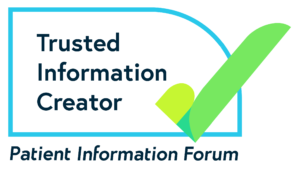Working from home with migraine
Working from home can be an option in many workplaces. We look at the benefits and challenges for people with migraine.
Who can work from home
Many workplaces allow remote working (working from home) for certain job roles at least part of the time. But this isn’t always possible. It depends on your job role, the organisation and their own policies and procedures.
Anyone can request to work from home, as part of a flexible working request. An employer doesn’t have to say yes. But legally, they must consider requests in a ‘reasonable way’. This can mean showing that they have fully assessed the advantages and disadvantages.
If you believe that working from home may help with your migraine, it’s something that you may also be able to request as a reasonable adjustment at work. Reasonable adjustments are changes that an employer makes to help meet your needs if you have a condition that is classed a disability. These changes can help you to perform your role. We have more information on when migraine is classed as a disability and getting support for migraine at work.
How working from home can be helpful for people with migraine
There are several ways in which working from home may help if you have migraine. It may help both in avoiding potential triggers for a migraine attack and in helping you to cope if you do have one.
Working from home may:
- avoid travel or a stressful commute, which can be a trigger for some people
- allow for more flexibility with your working hours
- make it easier to take breaks, and stick to regular mealtimes
- offer a more migraine-friendly working environment, with less noise, lighting issues or smells
- give you easy access to a quiet space when needed
- mean you can have your migraine medicines on hand and can take them as soon as a migraine starts
- make it easier to attend medical appointments when needed.
Challenges of working from home for people with migraine
While working from home can be beneficial for people with migraine, it can also come with challenges.
For many people, working from home means improvising a work area or adapting their living space. This can mean your ‘workstation’ isn’t set up in a migraine-friendly way. If your work provides adapted or specialist equipment, it’s important to have these available at home too.
You may find you end up working longer hours when working from home and spending more time looking at a screen. Both of these things can trigger a migraine attack. Video calls and meetings are a good way to connect with colleagues when you’re at home. But this can also increase the time you spend in front of the screen.
Working from home can also be quite isolating. This might have a negative impact on your wellbeing, and in turn on your migraine.
Tips for managing migraine if you work from home
The following points can help to reduce the impact of migraine if you work from home.
If you get a migraine attack when you’re working from home, you may feel like you should be able to ‘push through’ and continue working. But if you are finding it difficult to work, it’s better to take the time off you need in order to feel better. Otherwise, you may find your migraine attacks last longer or bounce back. It can also contribute to ‘burnout’ at work.
You may sometimes feel that you are able to carry on working during a migraine attack. This will be very individual to you. It will depend on what symptoms you have, how severe they are and your job role. It’s worth having an open conversation about this with your manager.
Keeping a routine when working from home is important. It can be even more important for people with migraine, especially if changes to routine act as a trigger. Try to stick to similar timings for going to bed, getting up and eating as much as possible.
Having something that you use as a prompt for starting and finishing work can help. This might be having breakfast before starting work and doing some light exercise when you finish.
Try not to work longer than your usual hours and try to ‘leave’ your workspace in some way at the end of the day. This might just mean turning off your laptop for the day.
Taking regular breaks is important, especially if you’re working at a computer. Use the chance to get up, move around and get some fresh air if you can. Some people find it helps to change position regularly. Even sitting on the sofa for a while rather than at a desk can help to break things up.
Many people find being dehydrated or going for long periods without eating can trigger a migraine attack. Getting up to prepare a snack or drink can be a good opportunity for a break.
You may not always be able to set up a proper workstation at home. But it’s important to try and make your work area as migraine-friendly as possible.
- Try to make sure your work area is well lit, using as much natural light as possible. Avoid glare from sunlight, bright, artificial lights, and flickering or flashing lights. Desk lamps that direct light evenly across your work area can help.
- Many people find that migraine can be associated with muscle tension in the head, neck and shoulder areas. Try to use a suitable desk and chair, with good lower back support to prevent neck and back pain. You should be able to rest your feet flat on the floor, with your computer and screen directly in front of you.
- Try not to sit too close to the screen – generally about an arm length’s away is recommended. Your screen should be positioned so the top of the screen is at eye level.
- It can help to have a separate screen to use with a laptop. Or, you can use a laptop stand to raise your laptop to the right height, with a separate keyboard and mouse.
- You may be able to use items around your house to help make your workstation more comfortable. These might include a cushion for your back or a box to rest your feet on. But if you need certain equipment, talk to your manager or HR department.
The light emitted by computer screens can trigger migraine for some people. Eye strain from looking at screens for a long time can also lead to headaches. There are things you can do to help manage this.
- Have regular breaks from the screen. Even just looking away from the screen from time to time can help. Short, frequent breaks from the screen – such as 5 to 10 minutes every hour – can be better than longer, less frequent breaks.
- Use an anti-glare screen or filter to reduce the amount of light reflected from your screen. There isn’t a particular type or brand of screen or filter that is recommended for migraine. It’s worth researching different products and reading reviews to find one that might suit you. Remember that while anti-glare screens and filters may help some people with migraine, they don’t help everyone.
- You may also find it helps to use a blue light filter. You can download software to reduce blue light on your screen. You may also be able to use ‘Night light’ settings on your computer to do this.
- Adjust the brightness of your screen to a level that suits you. Generally, it should be similar to the light around the screen. You may also find it helpful to try using ‘dark mode’ in your settings. There are certain apps and software available that allows you to adjust screen brightness too.
- Try adjusting the screen refresh rate in your computer settings. Usually, a higher rate is better.
- If video calls and meetings are an issue, turn off the video function and use audio only. It can help colleagues to understand if you explain in advance why you may need to do this. Aim to spread calls and meetings throughout the day or consider other ways to connect with colleagues.
Getting support at home
If particular adjustments or equipment at home would help, talk to your manager or HR department. You are still entitled to help and support even when you work from home. In fact, if your migraine is classed as a disability, your employer has a legal duty to make reasonable adjustments to help meet your needs.
We have more information about Getting support for migraine at work.
About our information
 This information has been written by The Migraine Trust Information and Support Services team. It has been reviewed by our panel of expert health professionals and people affected by migraine.
This information has been written by The Migraine Trust Information and Support Services team. It has been reviewed by our panel of expert health professionals and people affected by migraine.
Our information has been awarded the PIF TICK quality mark for trustworthy health information.
If you have feedback on our information, please get in touch at: feedback@migrainetrust.org
References for our information are available on request.
Last reviewed: June 2025 | Next review due: June 2028


